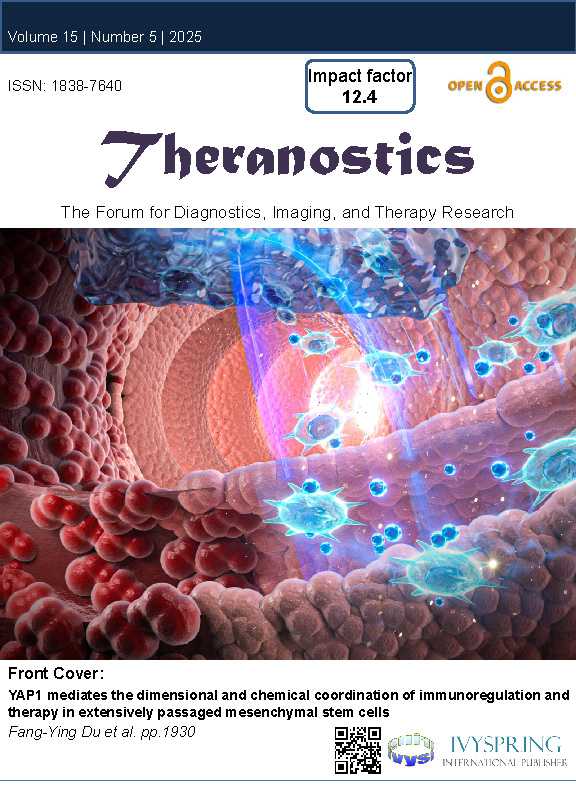Theranostics 2025; 15(14):6593-6614. doi:10.7150/thno.104329
Enhanced neoangiogenesis and balance of the immune response mediated by the Wilms’ tumor suppressor WT1 favor repair after myocardial infarction
Nicole Wagner1, Ana Vukolic1, Delphine Baudouy2, Sophie Pagnotta3, Jean-Francois Michiels4, Kay-Dietrich Wagner1
Affiliations
1CNRS, INSERM, iBV, Université Côte d’Azur, 06107 Nice, France.
2Department of Cardiology, CHU Nice, 06107 Nice, France.
3Centre Commun de Microscopie Appliquée, Université Nice Côte d’Azur, Parc Valrose, Nice 06108, France.
4Department of Pathology, CHU Nice, 06107 Nice, France.
Abstract
Rationale: Cardiac repair and regeneration are severely constrained in adult mammals. Several cell types have been identified as playing a role in cardiac repair. However, our understanding of the regulatory proteins common to these cell types and implicated in cardiac repair remains limited.
Methods: Experimental myocardial infarctions (MI) were induced in mice by ligation of the left coronary artery. WT1 expression in different cell types was determined by immunofluorescent double-labelling. VE-cadherin-CreERT2 (VE-CreERT2) mice were crossed with Wt1lox/lox animals to generate the VE-CreERT2;Wt1lox/lox strain to knockout WT1 in endothelial cells. Wt1lox/lox and Tie2-CreERT2 animals were crossed to generate Tie2-CreERT2;Wt1lox/lox mice to delete WT1 in endothelial and myeloid-derived cells.
Results: We show that the Wilms’ tumor suppressor WT1 is expressed in progenitor cell populations, endothelial cells, and myeloid-derived suppressor cells (MDSCs) in mice following MI. Endothelial-specific knockout of WT1 results in reduced vascular density after MI but does not affect functional recovery. Conversely, combined knockout of WT1 in endothelial and myeloid-derived cells increases infarct size, cardiac hypertrophy, fibrosis, hypoxia, and lymphocyte infiltration. Notably, angiogenesis, infiltration of MDSCs, and cellular proliferation were diminished, and importantly, cardiac function was reduced. Mechanistically, in addition to the previously established role of WT1 in promoting the expression of angiogenic molecules, this transcription factor positively regulates the expression of Cd11b and Ly6G, which are crucial for MDSC invasion, migration and function thereby preventing overactivation of the immune response.
Conclusions: Several molecules have been identified that are implicated in distinct aspects of cardiac repair following MI. The identification of WT1 as a transcription factor that is essential for repair mechanisms involving various cell types within the heart may potentially enable the future development of a coordinated repair process following myocardial infarction.
DOI: 10.7150/thno.104329

